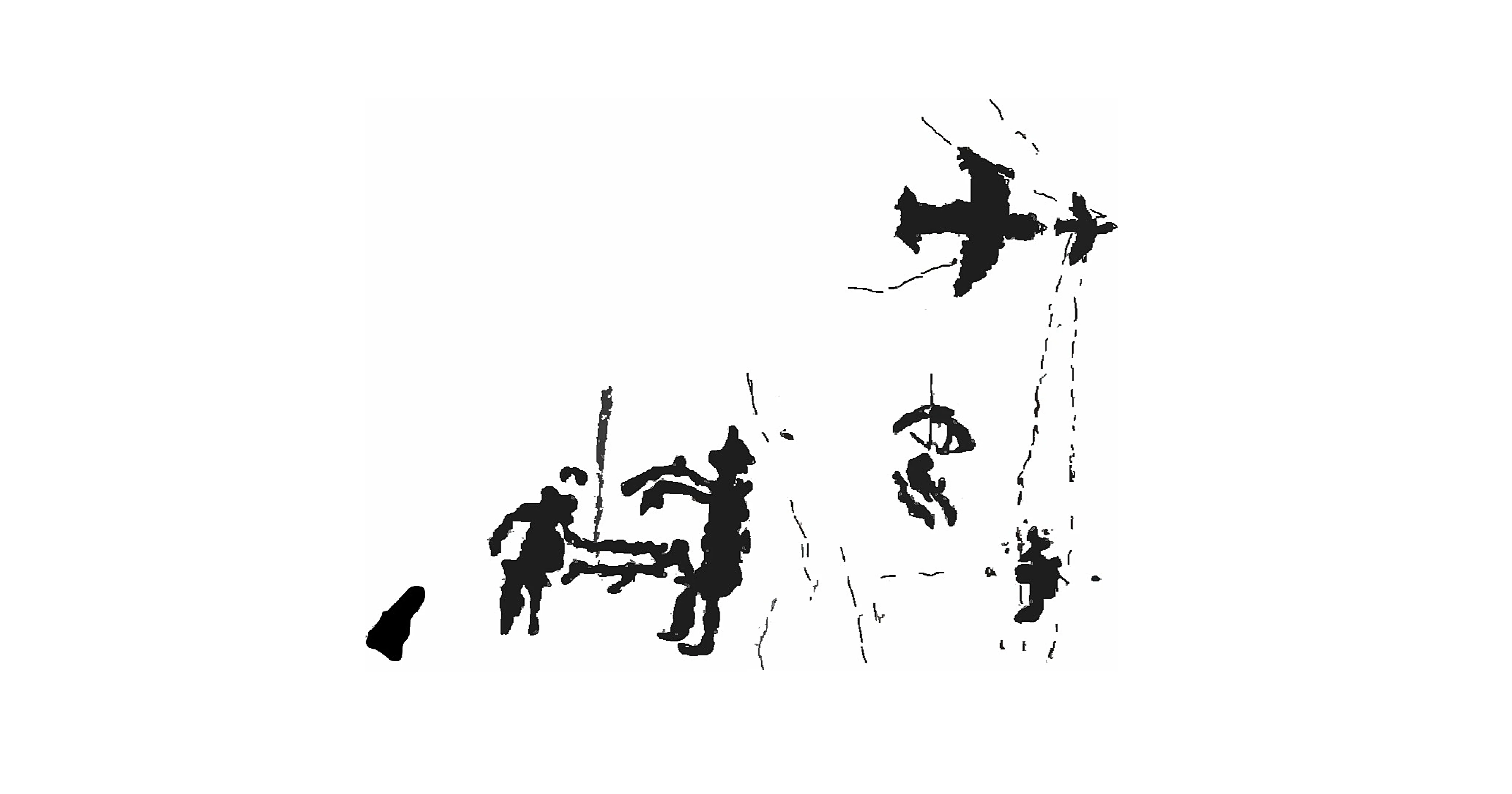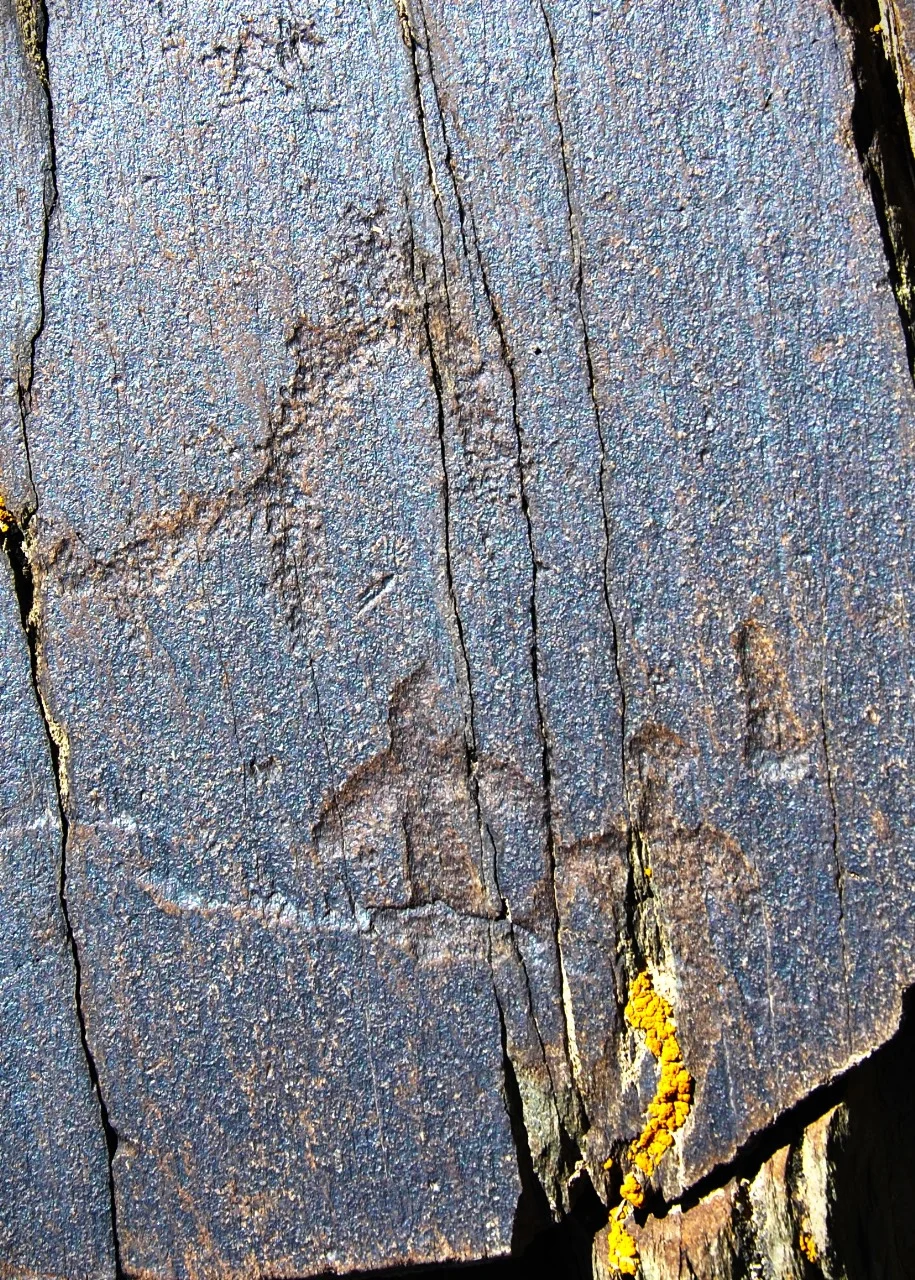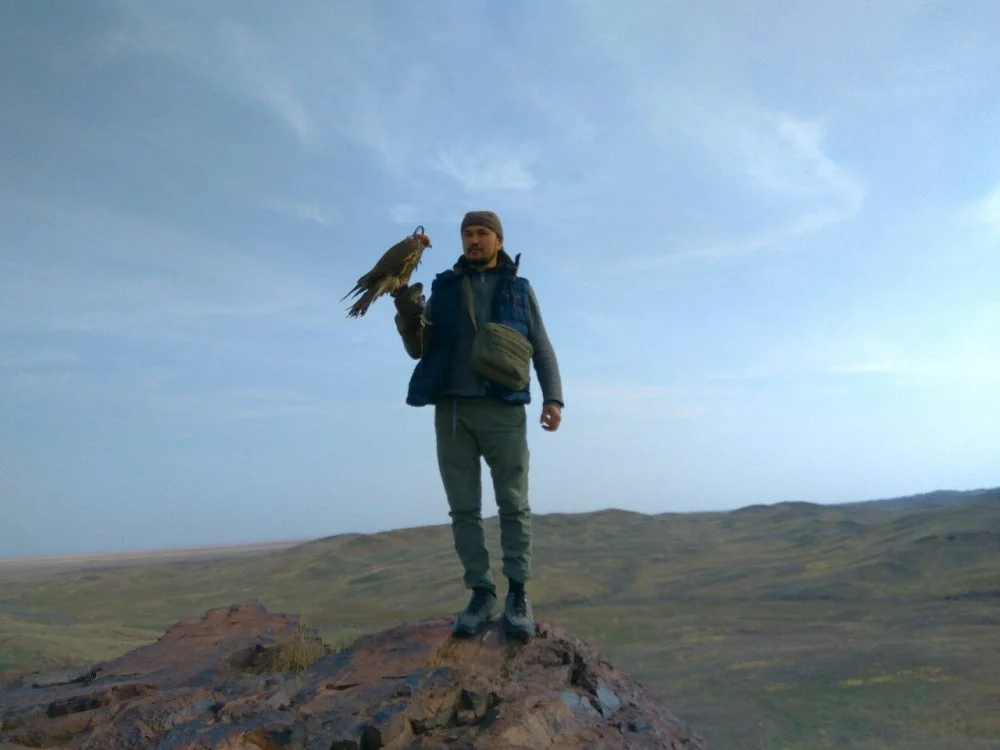A Falcon or a Soul?
The Riddle of the Man with the Bird

Falconry. Rendering of a petroglyph from the Kulzhabasy complex/Olga Gumirova
Petroglyphs featuring birds are quite rare in Kazakhstan, and those depicting birds of prey are even more unique.
One such petroglyph dedicated to hunting with birds of prey is found in the Chuili Mountains in the northwestern part of the sacred Kulzhabasy complex (Zhambyl Region). The petroglyph shows a man releasing a bird from his right hand. Some scholars believe this petroglyph can be dated to the Bronze Age,i


Falconry. Petroglyph from the Kulzhabasy complex/Olga Gumirova
Written sources and archaeological excavations provide reliable information about hunting with birds of prey, indicating its presence among the Andronovans.i
Falconry is a long-standing passion in Asia. Depictions of birds of prey appear on Hittite reliefs from the 13th century BCE. It is also mentioned in ancient Chinese chronicles from the 7th century BCE. In Kazakhstan, the Saka burial of a nobleman at Zhety-Tobe (7th–6th centuries BCE) contained skeletons of predatory birds, which were respectfully placed beside the deceased. A Bronze Age rock drawing from Arkarly (Zhambyl District, Almaty Region) shows a hunter with a bow, accompanied by a bird of prey and game, the figure itself resembling the drawing from Kulzhabasy.
It would seem that everything fits – the drawing from the Chuili Mountains depicts a bird of prey. But it’s not that simple. There is no game in the image, and the hunter has no weapon – it’s unclear how he would finish off the prey. The figure itself is unclear, covered with cracks and lichens, making dating difficult. This has led to another interpretation by specialists.
In Zhetysu, there are numerous recorded Turkic stone statues whose hands hold birds rather than ritual bowls. Scholars have yet to reach a consensus on the role of these birds: either they symbolize the soul of the deceased, or they depict a hunter with a bird of prey. Therefore, some historians date the drawing to the Turkic period.

Falconry. Petroglyph from the Kulzhabasy complex/Olga Gumirova
It is hard to say which version is closest to the truth. Still, according to kusbegi (hunters that hunt using birds of prey) Ruslan Abulov (pictured), the drawing in Kulzhabasy depicts his predecessor. This means that those who believe that hunting with birds of prey appeared in Kazakhstan not 2500 years ago but much earlier are correct.

Ruslan Abulov/Photo: Olga Gumirova



